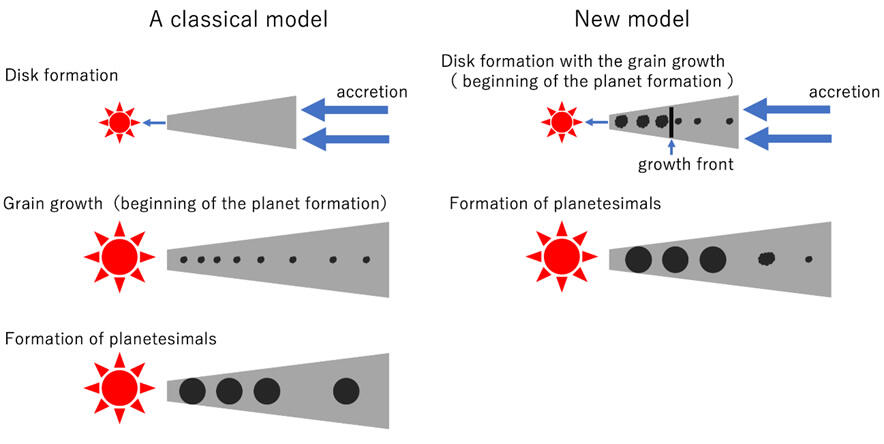An international joint research group that includes Research Scientist Satoshi Ohashi, Special Postdoctoral Researcher Ryohei Nakatani and Chief Scientist Nami Sakai of the Sakai Star and Planet Formation Laboratory, RIKEN Cluster for Pioneering Research; Assistant Professor Hiroshi Kobayashi of the Laboratory for Theoretical Astronomy & Astrophysics, Graduate School of Science, Nagoya University; and Assistant Research Fellow Hau-Yu Liu of the Institute of Astronomy and Astrophysics, Academia Sinica, focused on the fact that among protostar disks that are still growing, some possess "ring structures," and in doing so it successfully presented the possibility that these ring structures are created as a result of an accretionary growth of dust that occurs at the beginning of planet formation.

According to Ohashi, "Planets are believed to be formed as a result of the interstellar dust and gases that float in space coming together. In research in recent years, it has been possible to recreate--as numerical formulas--the circumstances involved in this dust coalescing and growing bigger. In light of that, we utilized those numerical formulas to simulate the circumstances by which the dust increases in size."
Up to now, it had been thought that planet formation took a very long time. However, when observations and simulations were compared, the results did not match. As such, when the calculation results were studied in detail, it revealed that dust was coalescing from the early stages. Furthermore, ring structures were discovered in young celestial bodies at around the same time. This mimicked the research group's simulations, and led it to believe that planet formation occurs earlier than conventionally thought.
This means that these ring structures are being formed as a result of dust growing to a large size, and that planet formation has begun at that point. In fact, when the group looked at the positions of the rings in 23 disks where ring structures have been found in radio wave observations by the ALMA Radio Telescope and the VLA (Karl Jansky Very Large Array; managed by the U.S. National Radio Astronomy Observatory), and put them alongside the results of its simulations, it became clear that it is possible to explain the position of the rings in young disks whose formation began less than one million years ago on the basis of this formation mechanism.
These research results raise major questions about classical planet formation theory, which says that planets are formed after the formation of stars. The results presented the possibility that the formation mechanism for planets is faster than has been conventionally thought, and that they start being made alongside protostars.
Ohashi says, "If detailed observations can be combined with theoretical calculations that take into account various physical processes, it is expected to make it possible to shed light on a new picture of star and planet formation, in which protostars and planets coevolve."
■ Protostar disk
A star is born as a result of a molecular cloud made up of molecular gas and dust contracting under its own gravity, but when this occurs gas with large angular momentum is unable to reach the center directly, which gives rise to a disk around the circumference of the protostar. This is referred to as a protostar disk.
This article has been translated by JST with permission from The Science News Ltd.(https://sci-news.co.jp/). Unauthorized reproduction of the article and photographs is prohibited.




